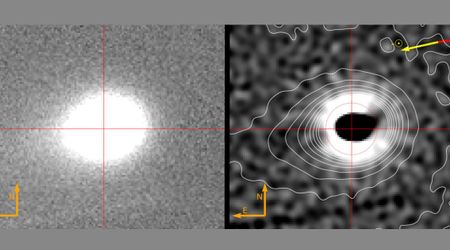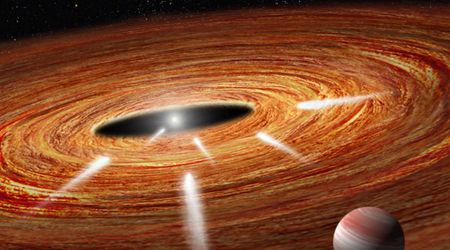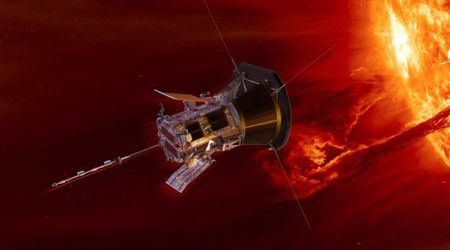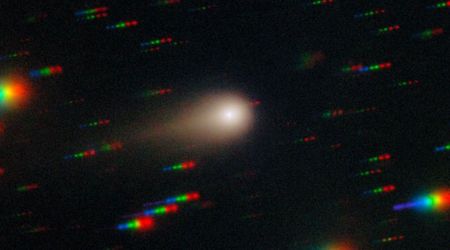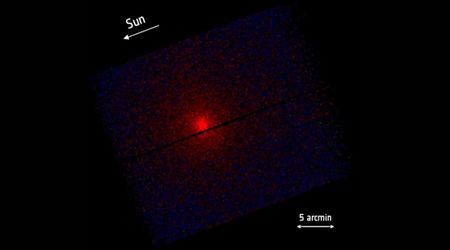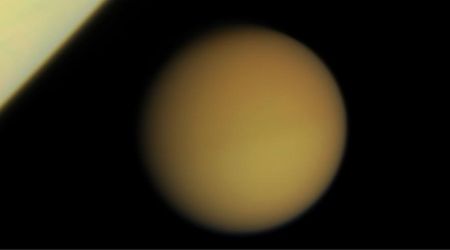how to identify a meteorite

You pick up a strange-looking rock, its surface unlike anything you've seen before, and for a moment, you wonder: Could this be a fragment from space? The idea is tantalizing, but hold on to your space helmets—many have been fooled by Earth's own geological wonders.
In fact, the majority of 'meteorites' brought to experts for analysis turn out to be what scientists affectionately call 'meteor-wrongs.' While it's easy to get carried away by the prospect of holding a piece of the cosmos, it's essential to know key ways to separate the celestial from the terrestrial, particularly because true meteorites have a unique composition, often containing elements and minerals not commonly found on Earth. Not to mention, meteorites come in various types, each with its own distinct characteristics.
In this article, we break down the top 6 ways to ensure that you've truly found a gem from the galaxy, not just a misleading mineral.
Table of Contents1st Identification Test: Gauge Its Density
Meteorites typically exhibit a significantly higher density compared to most terrestrial rocks. Terrestrial rocks tend to have a density around 3 grams per milliliter (g/mL), whereas iron meteorites, in particular, can have a density around 8 g/mL.
To gauge whether a rock might be a meteorite, you can begin by assessing its weight in your hand. If it feels notably heavier for its size, it could be a promising candidate.
To conduct a more precise density test, measure the rock's mass using a scale and determine its volume using an appropriate method, such as the water displacement method.
Calculate the density using the formula: Density (?) = Mass (m) / Volume (V). If the resulting density is significantly greater than the typical density of terrestrial rocks (around 3 g/mL), especially approaching or exceeding 8 g/mL, it increases the likelihood that the rock is a meteorite. Let’s go to the next test.

2nd Identification Test: Does a magnet stick to it?
While meteorites themselves are not naturally magnetic, the majority of them contain some iron-nickel metal, which inherently will attract a magnetic object.
To test the meteorite, you can simply use a fridge magnet to check for attraction. If the meteorite contains enough iron-nickel metal, it will attract the magnet and it will possibly stick to the specimen.
It's important to be cautious when using magnets for meteorite identification, as a recent study revealed that this approach can inadvertently erase valuable scientific data contained within these celestial rocks.
This erasure occurs because magnets overwrite the records of their parent body's magnetic field. The research also found that even the most ancient Martian meteorites have been subject to this magnetic memory loss.
This underscores the importance of adopting alternative techniques, like susceptibility meters, to assess meteorites.

3rd Identification Test: Does it have a Fusion Crust?
Meteorites often have a thin, black, or dark brown outer crust called a fusion crust. When a meteoroid enters the Earth's atmosphere at high speed, it experiences intense heat due to air friction. This heat causes the outer layer of the meteoroid to melt and vaporize, creating a thin, glassy or crust-like layer on its surface.
The fusion crust is typically black or dark in color and can be smooth or irregular in texture. As highlighted by Professor Chris Herd in this video presentation, it can even appear slightly flaky, potentially exposing the underlying meteorite surface upon gentle scratching.
The presence of a fusion crust indicates that the object in question has indeed passed through Earth's atmosphere at very high speed, distinguishing it from terrestrial rocks. It’s the most telling sign that what you have found may very well be a real meteorite.
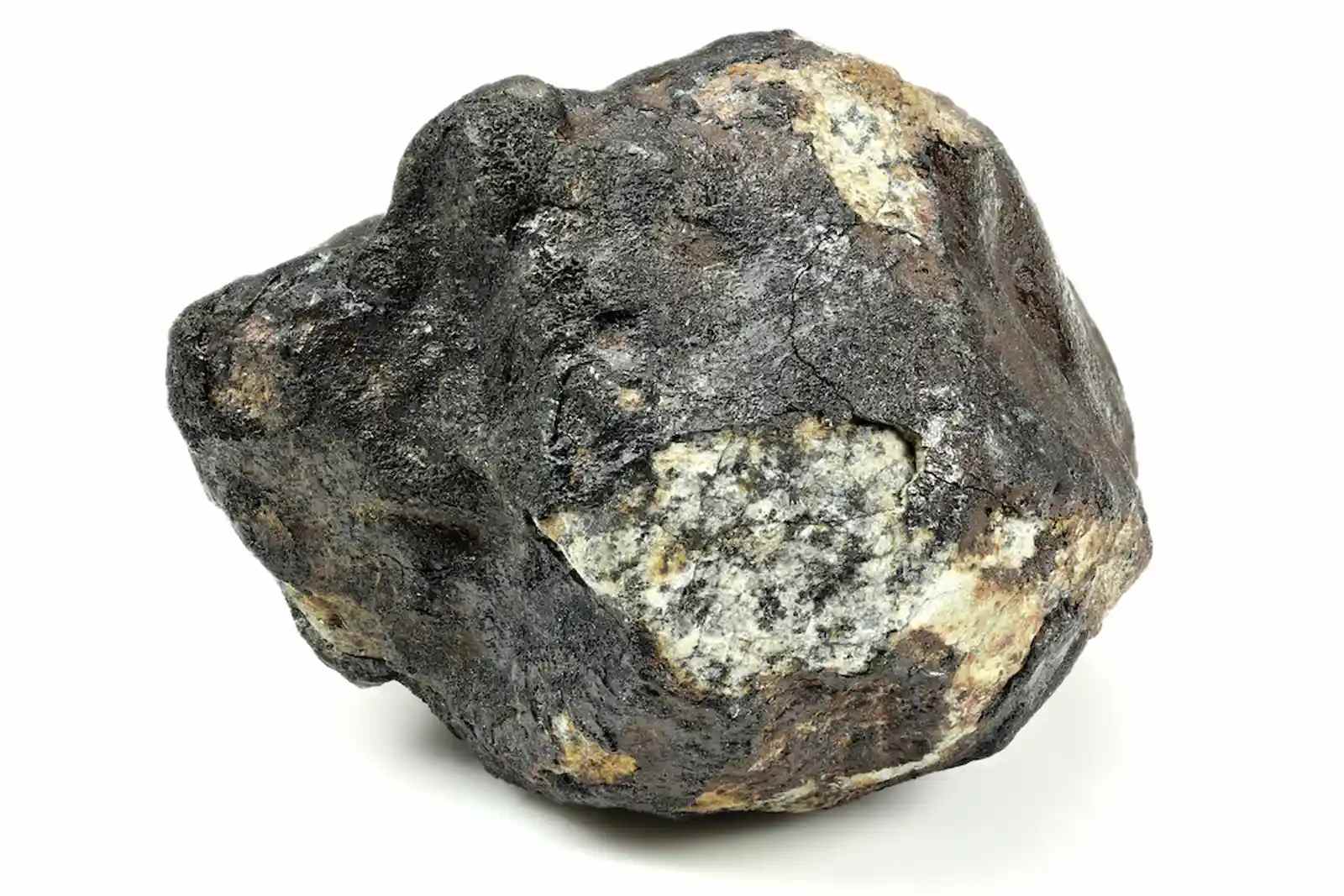
4th Identification Test: Does it have regmaglypts on its surface?
Regmaglypts are shallow indentations or cavities seen on the surface of some meteorites, specifically on the aerodynamic shielded side of iron and stony-iron meteorites. They are often described as thumbprint-like depressions or scoops. The term "regmaglypt" comes from the Greek words for "rake" (regma) and "carve" (glypt).
Regmaglypts are formed during the atmospheric entry of the meteoroid. As the meteoroid travels at high velocities through the Earth's atmosphere, it heats up due to ram pressure (not friction, as often mistakenly believed). This heating can cause the surface of the meteoroid to melt and ablate. Regmaglypts are thought to arise from the uneven ablation of this melted surface material.
The presence of regmaglypts can help in determining the orientation of a meteorite's flight through the atmosphere, and they also serve as an indicator that the meteorite has not been subjected to significant alteration or weathering after it landed on Earth.

5th Identification Test: Does it have chondrules on its surface?
Chondrules are tiny, round, silicate-rich particles found in chondritic meteorites, acting as ancient markers from over 4.5 billion years ago when our solar system was just forming.
These little spherical formations, primarily made up of minerals like olivine and pyroxene, hint at rapid melting and solidification events in the early solar nebula.
Their presence in a rock can be a telltale sign you're looking at a meteorite, as they offer a window into the early universe, revealing the materials and conditions that eventually birthed planets and other celestial bodies. If you stumble upon a rock with these distinct formations, you might just have a piece of space history in your hands!

6th Identification Test: Does it have Widmanstätten Patterns on its surface?
Widmanstätten patterns, often seen as intricate crisscrossing lines when a meteorite is cut, polished, and etched with acid, are a fascinating clue to a rock's extraterrestrial origins.
Named after the scientist Count Alois von Beckh Widmanstätten, these geometric designs emerge from the slow cooling of iron-nickel alloys within an asteroid over millions of years.
This process results in the beautiful interplay of two metallic phases: kamacite and taenite. These patterns are a rarity on Earth, given the unique cooling conditions required to form them.
So, if you're holding a rock that reveals this cosmic artwork after etching, chances are you've got a real meteorite from the vastness of space!

You’re positive this might be a genuine meteorite, what’s next?
So you've done your at-home checks and now you are 95% sure you may be in possession of a space rock. The excitement is bubbling over, and a barrage of questions fills your mind.
What should you do next? Well, now is the perfect moment to transition from being an enthusiastic space sleuth to teaming up with the pros—by initiating contact with a meteorite lab.
Contact the lab via email or phone to discuss your specimen and the results of your preliminary tests. They may ask for photographs or even a small sample to perform an initial assessment.
The laboratory will guide you through the submission process, and soon enough, your once-mysterious rock will be under the scrutiny of high-powered microscopes and spectral analyses.
You’ve officially authenticated your meteorite, now what?
You've just confirmed that you have a genuine meteorite, and suddenly, you're at a crossroads of opportunity. On one hand, you have the option of donating this celestial find to a reputable museum or university, where it could help scientists in their research on planetary formation or the early solar system composition.
On the financial side, you could sell your meteorite. It could be a goldmine, especially if yours originates from the Moon or Mars. Specialized auctions have been known to turn such rarities into significant cash assets.
You may also want to keep it for yourself and display it at home, immortalising your new title of meteorite hunter :)
Bottom Line
Finding a meteorite isn't like finding a penny on the sidewalk; it's a rare and often exhilarating experience that connects us, however briefly, to the mysteries of our universe.
Through the tips and techniques highlighted in this article—from observing physical characteristics to conducting magnet tests and seeking professional validation—you are now equipped to distinguish between a mere rock and a celestial visitor.
So the next time you stumble upon an unusual rock, you'll not only have the tools to identify it but also the context to appreciate its larger significance.
Learn more about meteorites ??
This page is part of our collection of astronomy articles. If you enjoyed the read, then you'll love the following articles.

From Space to Sale: How to contact meteorite buyers



